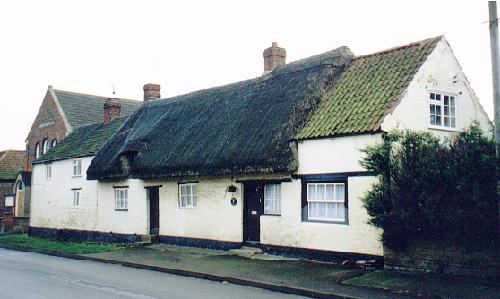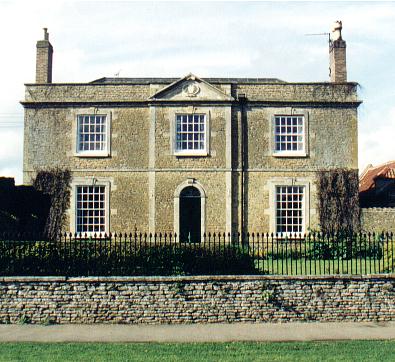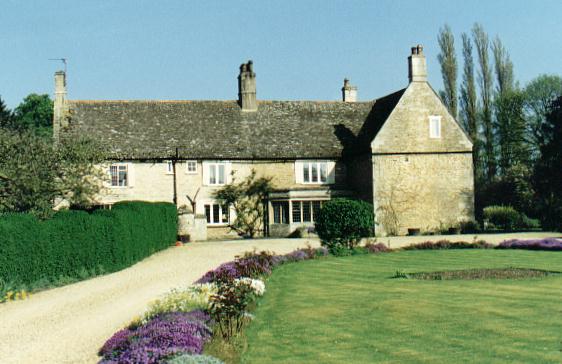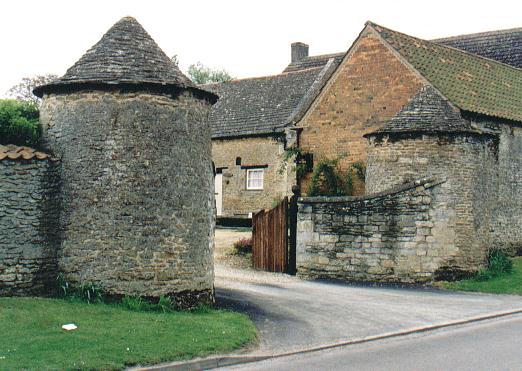|
Morton
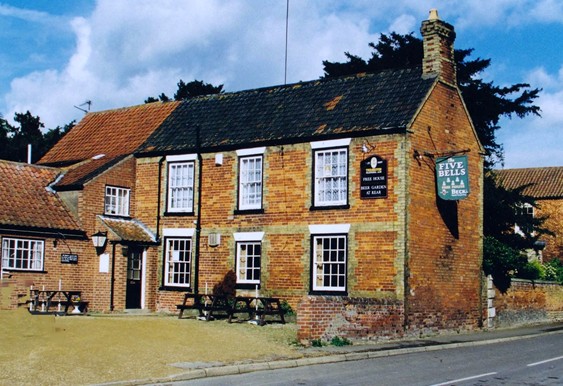
The Five Bells public house
Until the summer of 2004, Morton and Hanthorpe were two villages on either
side of the main A15 trunk road between Bourne and Lincoln, although regarded as
one by local people in all but name.
Now they are one, the change having been approved by the Office of the Deputy
Prime Minister, the Ordnance Survey and the Registrar General, and notices to
this effect were posted around the village in September of that year and in
future, its affairs are in the hands of Morton and Hanthorpe parish council. It
is but a change in name because the two communities have for long shared many
things, the church, post office, the village hall and not least, the public
houses because all of these facilities existed at Morton although not at
Hanthorpe.
Coincidentally, it was announced at the same time by the Lincolnshire
Association of Local Councils that Morton and Hanthorpe Parish Council had been
granted quality status, a prestige award for the council which is the first in
South Lincolnshire to be so honoured. Morton and Hanthorpe, as it has been known
for some time, was also named the best kept village in the 2,000-plus class, the
judge making very favourable comments about the absence of litter and the
community spirit that exists here.
The village church of St John the Baptist stands next to the Five Bells and the tower is a prominent landmark in the fenland countryside, its tall pinnacles and hideous gargoyles rising from the heart of the cross-shaped church while the wide western porch faces the main street. The door is handsome with tracery and studded with nails and the interior is impressive, a grand vista of arches and pillars from the early 14th century, while beyond is the vaulted tower with arches into the nave, chancel and transepts.
A small priest's door in the south wall of the chancel may be of 12th
century origin, thus this part of the chancel may have belonged to an
earlier church.
It
appears that in the second half of the 14th century, a scheme for
rebuilding on the present plan began and continued well into the 15th
century. The chancel has some particularly graceful windows and is typical
of 14th century design, contrasting strongly with the straight lines of
the Perpendicular which was later inserted in the east end. The great
tower with its fine strong vault was most likely built at the same time as
the nave, though its upper stages are later in character, and for five centuries,
it has stood as a monument to Christianity in this part of Lincolnshire and now it is illuminated at night and can be seen from several miles away, a beacon of faith in a flat and sometimes featureless landscape. The
aisles were completed in the Perpendicular style of the 15th century and
there is a particularly interesting octagonal font, a rich example also
from the same period.
|
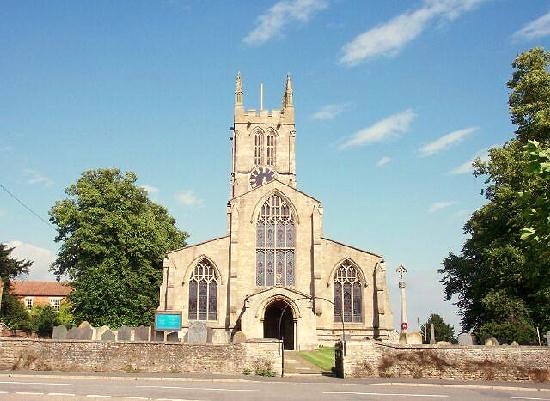 |
|
The parish church at Morton occupies a
dominant position in the main street
while the interior is equally striking. |
|
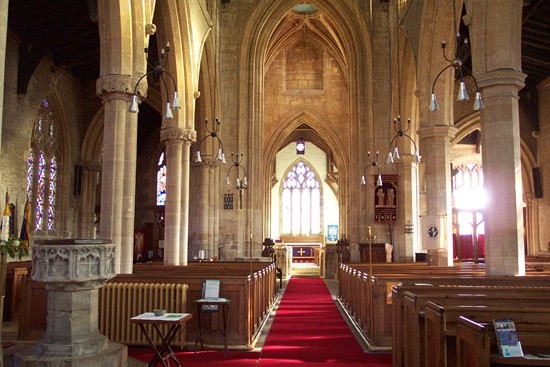 |
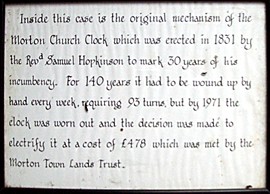 |
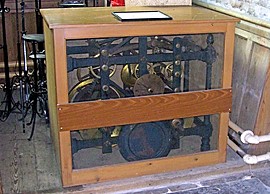 |
|
PAST VICARS OF
MORTON |
1209 Robert de Morton
1229 Robert de Banbury
1231 Peter
1272 Willam de Cottesmor
1277 Ralph de Glapthorn
1297 Walter Erlin
Roger, called Scissor
1369 William Warde of Dunnesby
1372 Nicholas Rose
1379 John de Depyng
1385 John de Halbertoft
Robert Halyday
1413 William Day
1424 Thomas Redemay
1430 John Heynes alias Waldon
1454 Thomas Smythy
1460 Richard Sponer
1463 Richard Echerd
Henry Echerd |
1496 Master Robert Eveden
1503 John Feld
Richard Webster
1530 William Dobson
1531 Henry Anderson
1534
attainted
1544 Thomas Rudocke
1548 John Feld
1551 Master Bertylmew
Boddoke
1554 Thomas Buddill
1560 Robert Collingwood
1565 Christopher Pratt
1568 Thomas Franke
1618 Humphrey Boston
1662 Tristram Dymond
1703 Robert Baron
1708 Richard Tonge
1738 John Meyrick
1758 Thomas Key |
1766 John Hewthwaite
1768 Francis Tong
1795 Samuel Edmund
Hopkinson
1841 Thomas Colbeck
Holdsworth
1862 William Stockdale
1901 Nisbet Colquohoun Marris
1914 John Herbert Boldero
1945 Justin Paul Taggart
1952 Edric George Close
1968 Edward Cyril Blake
1976 Michael Edgar Adie
1983 Tr. Bishop of Guildford
1984 Frederick Charles Young
1995 Gerald Arthur Curtis
2003 Graham Parry Williams
2012 Dr Lynda Pugh
|
|
Patrons of the living: 1209-1531,
Abbot and Convent of Bourne; 1544-51, the Crown; 1554- , the Bishop
of Lincoln. The vicarages of Morton and Haconby were united on 7th
July 1732. |
The
church underwent an extensive and costly restoration in 1861, mainly
due to the philanthropy of William Parker (1792-1885) of Hanthorpe House
and the church contains a memorial to him. The Marquesses of Exeter were
Lords of the Manor for centuries but the Parkers were among the best known
of the local families who actually resided in the area where they also had
large land holdings during the 19th century.
In
1999, the south and west facing walls of the tower were refurbished at a cost of over £30,000. Scaffolding went up during the summer to enable stonemasons reach the highest points and the work was completed by the autumn. It included re-pointing and replacing windows and stone which had been eroded by 600 years of weather but as with all country churches, there is still much maintenance work required to keep the fabric of this building in good order for future generations. The church hall on the far side of the road is less impressive although it no doubt serves its purpose as a meeting place for the
discussion of village affairs but then it could hardly compete with its grand neighbour.
The village inn, the Five Bells, has been a hostelry for at least two centuries but it has not been a business on its own account until recent
years. In 1842, it was listed in local records as both a farm and a public house run by Edward Clarke and by 1900, his son William Clarke was described as a farmer, butcher and publican.
The village hall at Morton looks a modern building but its history began during the late 19th century when it started life as a Methodist Chapel. A Methodist society existed in the village as far back as 1846 although there was no sense of permanence until a Mr and Mrs Pinder arrived to live at nearby Stainfield. They had been prominent members of the Wesleyan Society at Kirkby Underwood and through their enthusiasm, members of the congregation began to plan for their own chapel. A site was purchased for £49 in 1889 and building work eventually began in the autumn of 1892 and was completed by December at a cost of £200 although fittings cost a further £150.
|
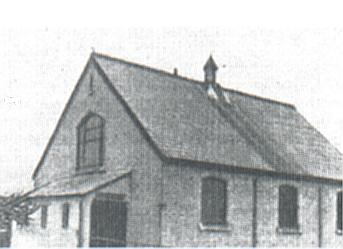 |
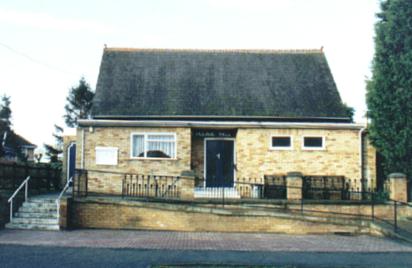 |
|
The Methodist church
at Morton (left) which was converted for use as the village hall
in 1969 when a new frontage and additional facilities were added
(right). |
The chapel,
which measured 40 feet by 27 feet with seating for 200 people, was built for
just under £400, much of the money being raised by donations, a bazaar and
sales of work. It was certified by the church for authorised worship the following year but it was not until March 1898 that the building was licensed for the solemnisation of weddings. The chapel lasted only 70 years and was closed during the winter of 1967 but sold two years later to the parish council and converted for use as the village hall that we see today. Although the refurbishment completely altered the appearance of the chapel, the original building can still be identified.
A large painting measuring 16 feet by 8 feet has been given pride of place on the wall of the village hall where it depicts the locality of past and present times. The painting was commissioned to celebrate the millennium and is the work of local artist Terry Barnatt who spent four months on its creation, using acrylic paints and emulsions. It is based on a map of the parish and includes landmark buildings such as churches and old houses, wildlife, farming scenes and village views.
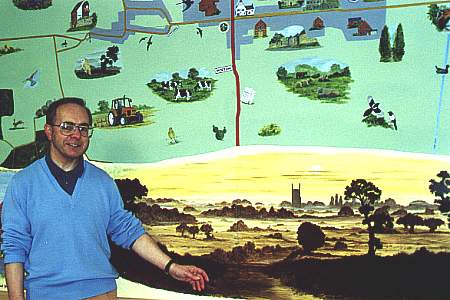
Terry who lives at Hanthorpe, which is part of Morton parish, became a professional artist and glass engraver after twenty years as a company secretary for a local wool merchant. These subjects were his hobby but now his full time occupation and his work is well known in the locality. He has a particular interest in wildlife and as a young man was influenced by artists such as Sir Peter Scott and Keith Shackleton which is much evident in the Morton Millennium Mural that includes flora and fauna that can be seen in the vicinity, particularly Bourne Woods, one of his favourite spots.
The mural was conceived by the village’s 2000 committee who financed it by raising the money locally and with a grant from the Lincolnshire Community Arts Fund. It was officially unveiled at a millennium party in February by Mrs Libby Murdin, one of the village’s respected senior citizens who has devoted much of her life to voluntary work in the community. She said that it was something of which the village could be proud. "We have celebrated the millennium", she said, "much more than other villages in the area. The committee has fostered and enriched community life in the village. We should be very proud to have an artist in the parish who has produced what you see. It will be a lasting memorial to the millennium, a thing of beauty, and I hope it will be a joy to everyone."
Contrasting properties
can be found in the main street at Morton village. This row of three cottages probably
date back to the 18th century but have been greatly altered and it is now difficult to ascertain where one starts and the other begins. Thatch has been retained in the middle section but the outer ends have been tiled, a much cheaper alternative. Across the road, a magnificent three-bay
Regency stone house with a one-bay pediment stands proud and unaltered and so retains its grandeur from another age.
The Grange is one of the oldest properties in the village, probably 17th century and built to an L-shaped design. The pair of circular lodges with conical roofs each side of the entrance may also be of this date.
The Victorian railway station at Morton has a similar history to the one at Rippingale and is of the same design and construction. It was built on the outskirts of the village around 1872 when the railway line between Bourne and Sleaford was opened and closed in 1964. The solid red brick property has since been turned into a private residence and the platform has been removed to make way for an additional wing to the house together with two garages although the engine shed and other outbuildings remain nearby.
|
THE MORTON TOWN LANDS CHARITY
In 1747, a local man, John Norton, donated land and buildings to five
people of Morton and a deed drawn up for the transaction recorded that he
would “pay the rents and fines of them to the use of four shillings and
two pence (21p) yearly and forever.” In 1899, the the Charities Commission
designed a new scheme based on this and some other small charities,
calling it Morton Town Land Charity. The scheme provides that 25% of the
charity’s income is donated to the St John the Baptist Church and the
remaining 75% is applied to any other charitable purpose within the
parish, but no donations are allowed to be made to individuals. The
charity currently has an annual income of £6,500 (2012) and is
administered by eight trustees who meet on two or three occasions each
year, or whenever they are required to consider any request for donations.
Recent recipients of grants apart from the church have included the
village hall, the school, the annual show and the Over-60s Club. |
|
FIRE BADLY DAMAGED THE KING'S HEAD |
|
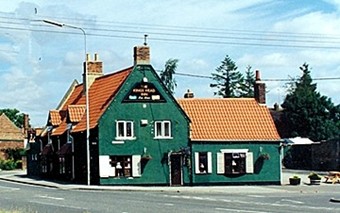 |
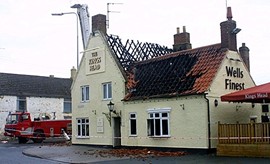 |
|
A mystery fire which broke out at the King’s Head in
the early hours of Monday 18th June 2007 destroyed large sections of roof
and gutted much of the interior. Police said later that the blaze was
being treated as suspicious.
The disaster highlighted the age of the hostelry which has a frontage on
the main A15 trunk road although local newspapers could not give an exact
date when it opened and even the owners, Charles Wells Brewery and Pub
Company of Bedford, were unable to help because their records of its
history have been lost and so its age is a matter of speculation.
The inn undoubtedly began life as a beer house, probably the front room of
a cottage owned by a farmer and brewer with villagers as his main
customers but with the coming of stagecoach travel using the Peterborough
to Lincoln highway, the premises would have been extended to cater for
passengers stopping for refreshment and later for overnight accommodation
and the stabling of horses. In fact, a close inspection of the property
reveals the various additions to the original building as it was slowly
transformed into the roadside inn of today, with bars and restaurant and
all modern facilities.
The name too gives an indication of its age because the King’s Head dates
from the reign of Henry VIII in the 16th century. Until 1533, when the
monarch was excommunicated for marrying Ann Boleyn, the Pope’s Head was a
popular inn sign but all were changed to the King’s Head and this accounts
for the large number still in existence today. The Morton pub, therefore,
is likely to date from this period but records are few and the earliest
mention from my own archive is in 1842 when James Andrew was the landlord.
Nevertheless, the absence of documentary evidence should not exclude the
possibility that it is much older and may therefore enjoy the reputation
of an ancient country inn.
In July 2008, the owners said the restoration was too expensive and after
an abortive meeting at the Angel Hotel on May 12th, held in the hope of
finding someone to take over the business and the fixtures and fittings
such as furniture and carpets, decided to put the property up for sale but
it failed to meet the reserve price of £120,000 at an auction in July when
bidding stopped at £116,000. It was eventually sold privately to
Lincolnshire Co-operative who planed to pull down the derelict building
and build a new food store on the site and consequently demolition began
in October 2013. |
|
MORTON IN PAST TIMES |
|
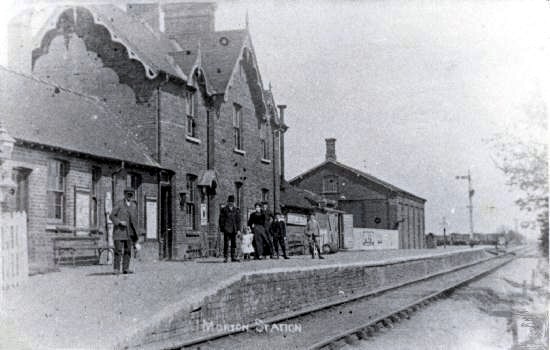
Morton railway station circa 1890 |
|
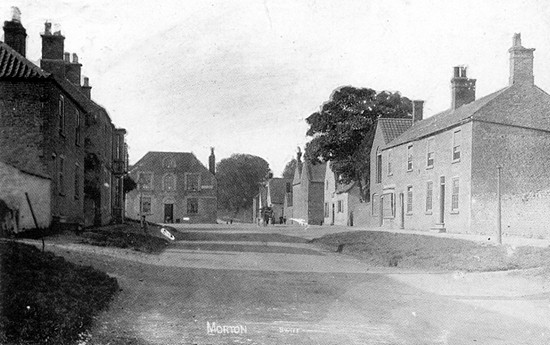 |
|
A rare postcard view of the village street looking
westwards towards the main Lincoln to Peterborough road, taken by the
Bourne photographer Ashby Swift. |
|
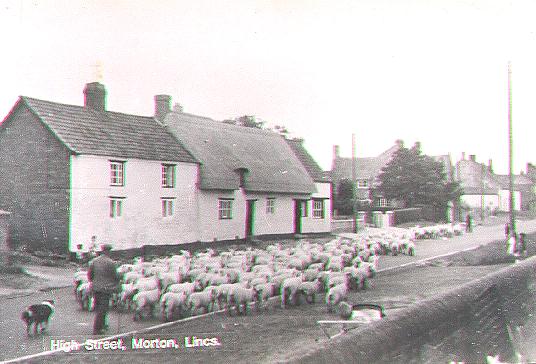 |
|
A flock of sheep being moved to new pasture by way of the High
Street, pictured about 1910, before the outbreak of the Great War. |
|
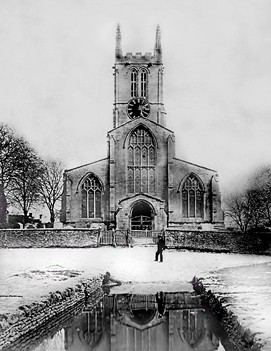 |
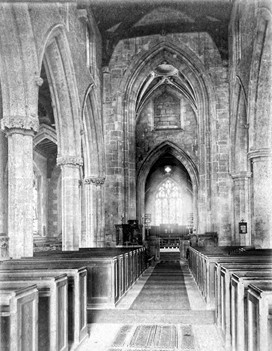 |
|
These two rare photographs of the church were taken
by William Redshaw circa 1880, the exterior south view showing the water dip
in the main street where carts and wagons were driven in for washing. The
photograph below, also by William Redshaw, was taken circa 1920 by which
time the horse pool had disappeared. |
|
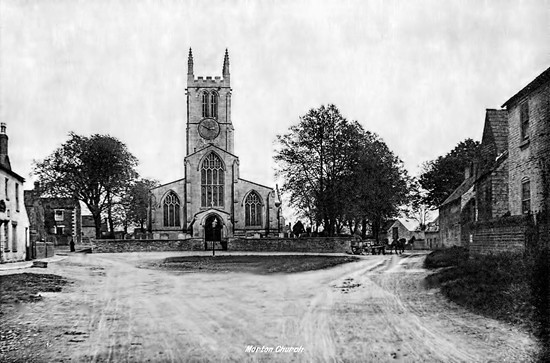 |
|
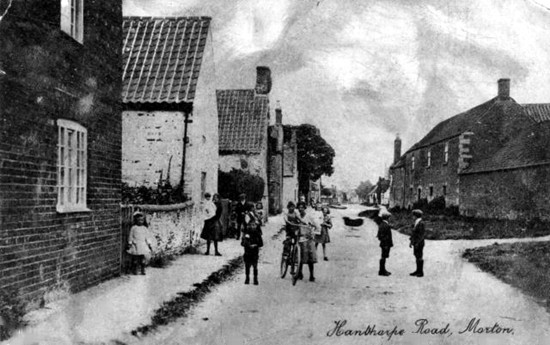 |
|
Another rare photograph of children playing in
Hanthorpe Road, Morton, from a picture postcard posted in 1921. |
|
A postcard view of the church
and village taken
around 1910 by the
Bourne photographer Ashby Swift. |
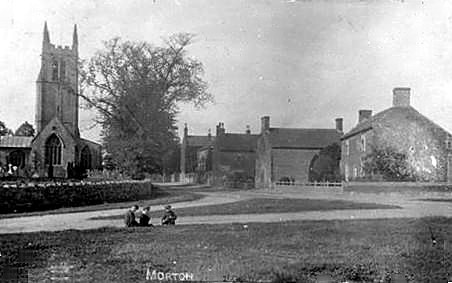 |
|
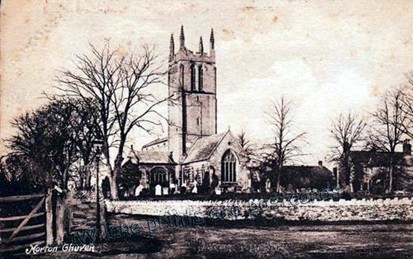 |
A postcard view of the church taken before the
First World War, probably around 1910, a popular period for picture
postcards which were used as a form of greeting and as means of
communication. |
|
|
A postcard
view of the main street from the same period, also by Ashby Swift,
and taken
from outside
the church, a view
that has
changed little today. |
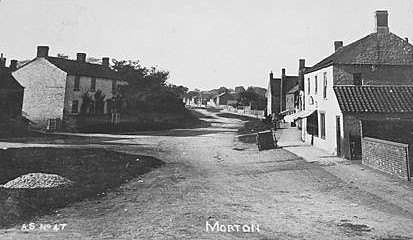 |
|
|
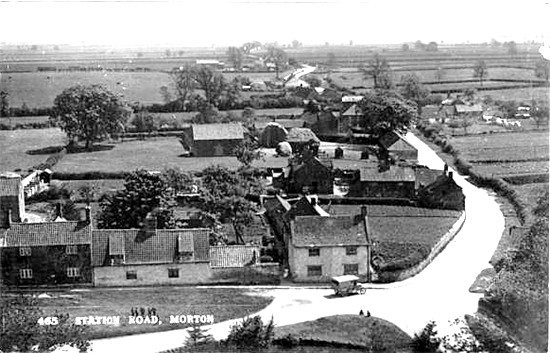 |
|
An aerial view of Station Road, Morton, from circa
1930. |
|
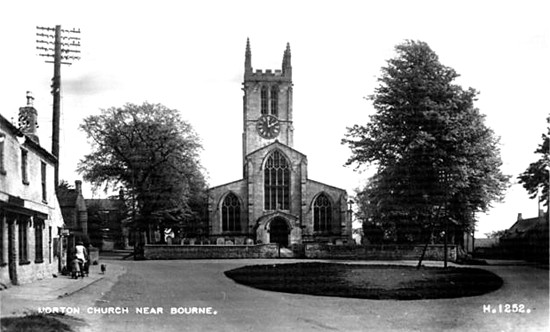 |
|
A picture postcard view of the village from 1950. |
|
FROM THE ARCHIVES |
|
Lost on
Saturday the 2nd August last between Bourne and Morton, a hide stamp
belonging to an officer in excise. It is like to a hammer without a shaft;
it hath a crown on the face with some figures under the crown viz. 4 5 7.
Whoever returns it to Mr John Caldicott of Bourne, or to the Officer of
Excise at Morton, in a month's time from the date hereof, a reward of five
guineas will be given and no questions asked. - public notice from the
Stamford Mercury, Thursday 29th September 1740.
TO BE SOLD OR LET
A very good windmill standing in the parish or Morton, near Bourne, in the
county of Lincoln. For further particulars enquire of Mr Matthew Thorpe of
Bourne aforesaid or of Benjamin Batty of Spalding in the said county.
- public notice in the Stamford Mercury, Friday 25 December 1746.
Beneath here lieth interred the body of Mr Thomas Stevens Hussey who at
the age of ten years was presented with a commission in the Royal
Artillery by the late Marquis of Granby. He departed this life September
8th, 1787, aged 34 years. - inscription on a ledger stone in the nave
of the parish church at Morton, near Bourne. Edward Bennet, carpenter, of Grimsthorpe, on
condition of my not proceeding against him in the spiritual court, did
this day, by public pardon and openly confess his crime in the church, and
forfeit 10 shillings to the poor of Morton, for walking in the church with
his hat on, refusing to be covered and for talking at a funeral.
(Signed) Samuel Hopkinson, Vicar.
Bennet behaved so very well that the money was afterwards returned.
- from the parish registers dated 12th March 1797.
We are concerned to hear that, after the lapse of four years only, the
village of Morton. near Bourne, and the circumjacent neighbourhood are
again infested by a horde of thieves. Early in the autumn they commenced
with various petty crimes, frauds and misdemeanours, poaching in different
branches, obtaining money in dishonest habits under false pretences,
clearing onion beds, breaking trees and snipping them of the fruit,
pilfering wood yards etc. With the advancing winter, they advanced to more
atrocious acts: not a single week, and scarcely a night, elapsed without
some depredations, more or less, upon the poultry and sheep, generally by
cutting off the limbs of the latter; sometimes by driving them entirely
away. As wickedness is, for the most part, progressive, so, in the depth
of winter, they advanced to more alarming modes of spoilation, entering
shops under cover of the evening and carrying away whatever was at hand:
and, about 7 o'clock on Thursday night the 16th inst. while William
Fisher, labourer, was employed in thrashing his mother's gleanings in a
distant part of Morton, some persons, one of whom is supposed to have
stood sentinel, broke into his house and, after forcing six different
locks in the interior, succeeded in taking £7 in Sleaford bank bills and
carrying away various articles of apparel, linen etc. Several loose
characters, reputed rogues and poachers, are suspected and
measures are adopted which encourage the inhabitants generally to hope
that the offenders will be brought to speedy justice. - news report
from the Stamford Mercury, Friday 26th February 1819.
Supposed to have been killed during the night of the robbery at Morton,
near Bourne, a beautiful stout, black pointer, Nick, well known for its
sagacity. Whoever will give information, even of one of the offenders, so
that the other or others may be convicted of the above atrocious robbery,
or cruelty in the destruction of a most valuable animal, shall receive ten
guineas reward, besides a promise of intercession for pardon: if, on the
other hand, it should be found in any place, a handsome remuneration will
be made to any one who will have the goodness to restore it to the Rev S E
Hopkinson. If only heard of, dead or alive, Mr Hopkinson will be much
gratified by the favour of a post letter. - public notice from the
Stamford Mercury, Friday 26th February 1819.
An inquest was held at Morton, near Bourne, on Wednesday the 20th
inst., by Samuel Edwards, gent., coroner, on the body of Isaac Wyers the
elder, a farrier, aged 68 years, who on the previous day was found by his
wife hanging by the neck by a cord to a baulk in the stable near his
house, quite dead. Deceased had, a quarter of an hour before he was found
in the manner above described, been taking refreshment with a neighbour
but appeared much depressed in spirits and was very incoherent in his
conversation. Verdict, hanged himself during an aberration of mind. -
news report from the Stamford Mercury, Friday 29th October 1830.
Some dastardly villains have of late much annoyed Mr Thompson, of
Morton, near Bourne, who, besides having had his windows broken, his fruit
trees destroyed and the throat of a valuable wether sheep cut, has
received a diabolical threatening letter. No cause can be assigned for
this series of injuries except Mr Thompson's being overseer of the poor:
but even in this occupation he has ever been esteemed as a kind and
considerate friend of the humbler classes. The sum of £53 11s. in rewards
has been offered by handbills for the apprehension of the offenders. -
news report from the Stamford Mercury, Friday 23rd December 1831.
EXTRAORDINARY FECUNDITY: A sow the property of Mr James Andrew, at the
King's Head, Morton, near Bourne, has had five litters and produced the
large quantity of 86 pigs. She now by her 21, and from all appearance is
likely to do well. She has been in the possession of Mr Andrew for quite
two years. - news report from the Stamford Mercury, Friday 26th March
1841.
On Tuesday last, at Morton, near Bourne, a melancholy accident befell a
young man named Howitt, a servant of Mr Charles Rogers, farmer: whilst
ploughing, he had a loaded gun held upon the plough to frighten crows and
having occasion to use it, he was about to draw out the gun with the
muzzle towards him when it accidentally discharged, the contents passing
into Howitt's shoulder close to the joint and shattering the bone etc in a
most frightful manner. Mr Bellingham, of Bourne, immediately visited the
young man and subsequently Mr Jackson, of Stamford. It was, we understand,
the united opinion of these gentlemen that nothing but amputation at the
shoulder joint could be of any service. The poor sufferer refused to have
so severe an operation performed and now lies in an almost hopeless
condition. We trust this will be a warning to persons carelessly using
firearms and prevent them from loading guns with anything but powder for
frightening birds. - news item from the Stamford Mercury, Friday 21st
April 1843.
There have been 37 deaths at Morton, near Bourne, within the year 1848,
out of a population of 1,000. - news item from the Stamford Mercury,
Friday 12th January 1849.
On Wednesday night the 11th inst, some persons entered the churchyard
of this village and threw down a quantity of coping and part of the wall.
It being the "feast time", the offenders were probably pot-valiant
[drunk]. It is supposed that the same party, when returning from the
re-opening of the Plough Inn at Dyke a few weeks ago, committed many
depredations, such as throwing off gates, breaking windows etc. The
churchwardens have offered a reward of 20s. for discovery. - news
report from the Stamford Mercury, Friday 20th July 1849. An inquest was held on the
20th ult. by Mr William Edwards, coroner, on the body of a young man named
Cornelius Ashton, a resident of Morton, whose death occurred in an awfully
sudden manner. He had joined his brother and some comrades in the harvest
field of Mr Ostler and whilst showing them how expeditiously he could tie
up some sheafs of corn, he suddenly fell to the ground and instantly
expired. Mr Burns, surgeon, of Bourne, attributed his death to a fit of
epilepsy and a verdict to that effect was returned.
- news item from the Stamford Mercury, Friday 6th August 1858.
On Monday evening last a large number of persons congregated at Morton
to witness a foot race against time, in which Mr P Stockdale ran in good
style a mile in 4 minutes 48 seconds. - news item from the Stamford
Mercury, Friday 28th March 1873.
SUDDEN DEATH: On Wednesday, the 2nd inst., a sudden death occurred at
Morton. Edmund Grummitt, aged 68, went to work on that morning, but not
feeling well enough to remain, he started to go home. He was overtaken on
the road by a person who gave him a ride in a cart. When near Morton
railway station, the driver of the cart noticed deceased's hat fall off
and he called to his assistance some men who were near but it was soon
evident that Grummitt was dying, and in a very short time before reaching
home he expired. An inquest was held before William Edwards Esq., coroner,
on the following day when a verdict of "death from natural causes" was
returned. The immediate cause of death was disease of the heart. - news
report from the Grantham Journal, Saturday 12th April 1873.
GARLAND TREAT: On May 1st (May Day), the schoolchildren of this village,
according to custom, carried garlands from door to door, and the
parishioners supplied them with money which was expended in a treat on the
11th inst. On the afternoon of that day, about 120 children had tea in the
schoolroom and afterwards adjourned to a field for various games which
were freely indulged in till dusk. Two fire balloons ascended during the
evening (fourteen and twenty feet in diameter respectively), and a good
display of fireworks brought the proceedings to a close, so far as the
children were concerned. A number of ladies and gentlemen of the village,
together with a few invited friends, then assembled in the schoolroom for
a social dance which was a pleasant termination to the holiday. - news
report from the Grantham Journal, Saturday 19th May 1877.
Outbreak of pleuro-pneumonia in Lincolnshire: A serious outbreak of
this highly contagious and rapidly fatal disease was reported to the local
committee for the Kesteven Division of Lincolnshire on 16th inst. Twelve
beasts had been attacked and had to be slaughtered, all belonging to Mr
Batterham, of Morton, near Bourne. Their total value amounted to nearly
£300. The local committee instructed the inspector to immediately take all
necessary steps to prevent the spread of the disease. - news report
from the Northampton Mercury, Saturday 24th March 1888.
Outbreak of anthrax in Lincolnshire: At a meeting of the Contagious
Diseases Committee of the Kesteven Council on Saturday, an outbreak of
anthrax in a flock of 313 lamb ewes, on the farm of Councillor Measures,
of Morton, near Bourne, was reported. Twenty-five of the sheep had died
and ten had been destroyed by order of the inspector. The committee now
directed the whole flock to be slaughtered, allowing as compensation the
sum of £927 15s. - news report from the Lincolnshire Echo, Saturday 7th
February 1893. |
|
PHOTO ALBUM |
 |
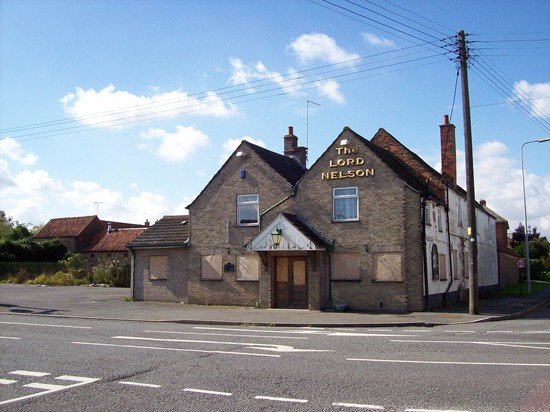 |
|
The once busy Lord Nelson which stands on the main A15 at the village
crossroads pictured here standing empty and boarded up in September 2015
awaiting a decision over its future. The public house was sold by the
brewery and closed in 2013 and the new owners planned to demolish the
building and build a supermarket on the site but there have been many
objections and the project remains undecided. |
|
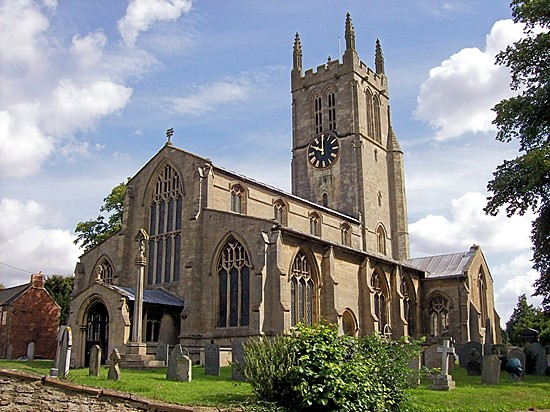 |
REVISED SEPTEMBER
2015
See
also
Morton church in past times
The church bells
The Rev Samuel Hopkinson
The violent storm that terrified a village
A description of the parish
Morton in past times
Morton Baptist chapel
Death of an old soldier

Go to:
Main Index Villages
Index
|








